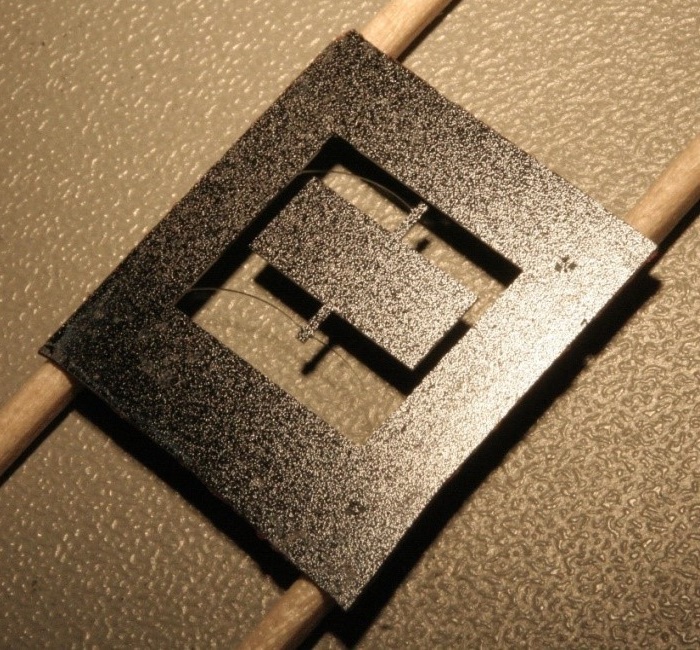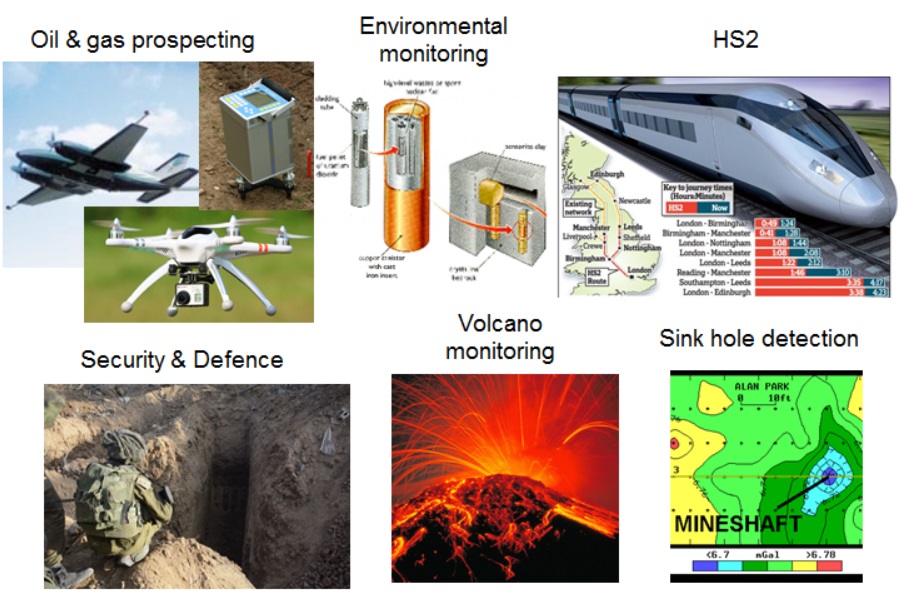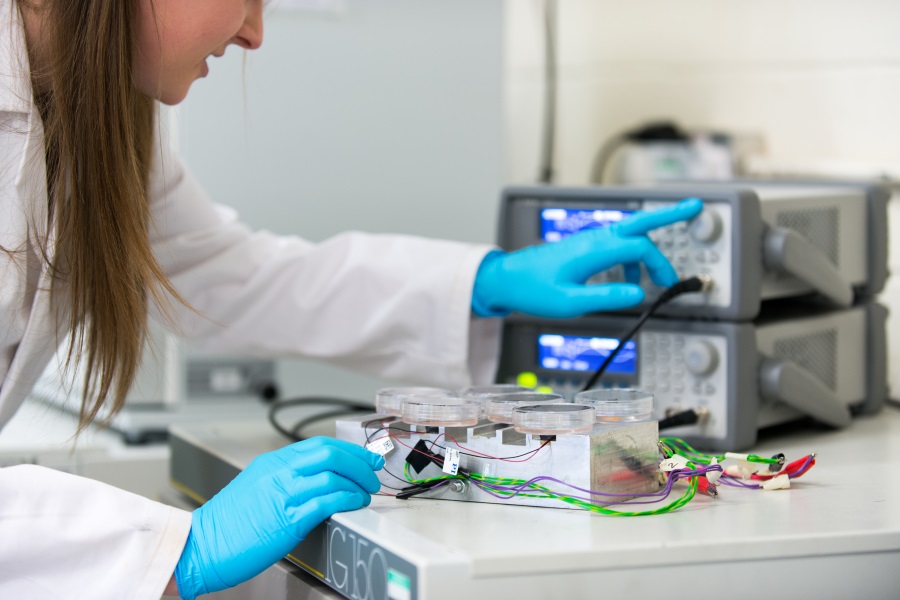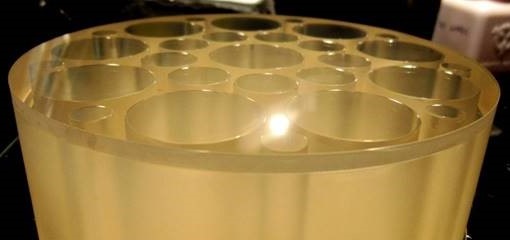Impact and Knowledge Exchange
Impact and Knowledge Exchange
The development of precision instrumentation and novel data analysis algorithms for extracting astrophysical information has led to a number of spin-off applications. Some of these are described below.
MEMS gravimeters
A direct applied spin-off from the gravitational wave work on suspension modelling/development is the development of high sensitivity MEMS gravity sensors. These devices are fabricated using standard micro/nano fabrication techniques and approach sensitivities of 30 ng in a 1 s interaction time (for comparison, the accelerometer in a mobile phone is 1000 times less sensitive). The combination of expertise in precision opto-mechanical systems (Institute for Gravitational Research) and Micro-NanoFabrication (James Watt Nanofabrication Centre) has enabled a transformative technology in gravity imaging. The work has received funding from the Royal Society Paul Instrument fund, the STFC Global Concept Challenges fund, and is currently supported via an EPSRC QuantIC grant under the UK Quantum technology programme.

A lab based prototype has already been used to make a measurement of the earth tides (elastic deformations of the earth due to the tidal potential of the Moon/Sun). This work was published in Nature in 2016 (R. P. Middlemiss et al, Nature 531, 614-617), and demonstrated the first MEMS device with sufficient stability and long term stability for gravity monitoring applications.
There is significant company engagement from the oil & gas industry (Bridgeporth, Tullow Oil), environmental monitoring sector (USGS), defence & security (QinetiQ, DSTL, Thales) and space applications (Clydespace). Particular application areas include Oil & Gas prospecting, environmental monitoring of buried waste/water acquefars, seismic surveys for high speed rail, monitoring hidden tunnels/sink holes for the defence & security/civil engineering sectors, and imaging magma buildup in volcanic calderas.

Currently the device is being readied for field trials, which requires the development of field portable electronics running off battery power and miniaturised packaging. The miniaturisation of the electronics is being funded under a QuantIC partnership project together with the company partners Kelvin Nanotechnology (device fabrication), OptoCap (device packaging) and Bridgeporth (end user).
Nanokicking stem cells

Gravitational wave researchers (University of the West of Scotland / University of Glasgow), alongside cell engineers, have developed a new bioreactor system which converts adult stem cells into osteoblasts (bone building cells), using precise nanoscale vibration ("nanokicking"). This is the first time that volumes of bone can be promoted to grow without the need for induction factors (chemicals - with potential hazards) or expensive engineered scaffolds. We have engaged with surgeons and the Scottish National Blood Transfusion Service (SNBTS), which will enable the novel bone graft technology to be tested in a person within the next 3 years. This study was funded by Find A Better Way (FABW), a UK charity who have identified this technology for helping victims injured by landmines.
Gravitational wave researchers at the University of the West of Scotland have led in the application of this technology within other cell lines, including the demonstration of induction-free fusion of placental cell lines (again, the first demonstration of this), in addition to studying the effects on biofilm formation (showing reduction in biomass and change in composition/structure of biofilms when nanokicking is applied). Studies are also underway with other adult stem cell lines, including heamotopoetic stem cells (HSCs) which give rise to the blood and immuno cell lines in the body.
Bone is the second most transplanted tissue behind blood, and there are major challenges in the supply of bone graft for clinical procedures. This work has developed the first clean, scalable and cost-effective process for promoting bone formation from a patients own stem cells. This has the ability to:
- Provide bone graft material to heal non-union fractures, without the need to using donor sites from elsewhere in body (e.g. hip), thus reducing risk and reducing recovery time to the patient.
- Better inform therapies (e.g. Whole Body Vibration) for reduced bone density degradation in SCI (severe spinal injury) patients.
- Develop improved cell-based assays for the pharma industry, e.g. drug screening (fail fast, fail cheap approach).
Data analysis for improved retinal scanning
The application of Bayesian analysis techniques, normally applied to hunting for compact objects in the LIGO data stream, has also been used to provide quantitative and robust image identification algorithms to optimise retinal scanners. Quality control is of particular importance to a medical imaging company such as Optos; it is crucial their medical devices produce retinal images trusted for clinical diagnosis. Currently, image quality parameters are measured to catch any devices failing standards on the production line, but the root cause and varying nature of several of these failures is not fully understood. Systems that involve scanning, such as Optos Laser Scanning Ophthalmoscopes, are subject to image quality issues in their manufacturing. Such issues arise through a combination tolerances of the electrical, optical and scanning components that make up the final product.
Work has been undertaken between the Institute for Gravitational Research and Optos to develop photonics/optics test rigs and algorithms for detecting artefacts in images and predicting root causes. By developing a test system that can adapt itself by learning from supplied examples, such as the algorithm proposed here, the improved algorithm-based quality assurance process can be run continuously and reduce the time required. This work is a direct spin-off from the groups expertise in data analysis algorithms for the gravitational wave community.
Industry engagement: Gooch and Housego (UK) Ltd

Gooch and Housego have been working with the IGR since 2005. The collaboration started as customer / supplier but rapidly developed to include technology transfer and process development. Both sides have benefited from the projects we have worked on that include a prototype lightweight mirror, and lately with each of us having one of the associates in the Marie Curie Initial Training Network for students in gravitational waves - GraWIToN, researching application of the bonding process to new materials.
The sale of bonded components is currently a relatively small part of Gooch and Housego's revenues. There are signs that it could become more significant as Gooch and Housego increase not only their market share but also the overall market for what is a relatively new technology for industrial purposes. This is an evolving state as wider awareness in the sector of the capabilities of hydroxide catalysis bonding - and technical demands on joined optics - continue to increase.
